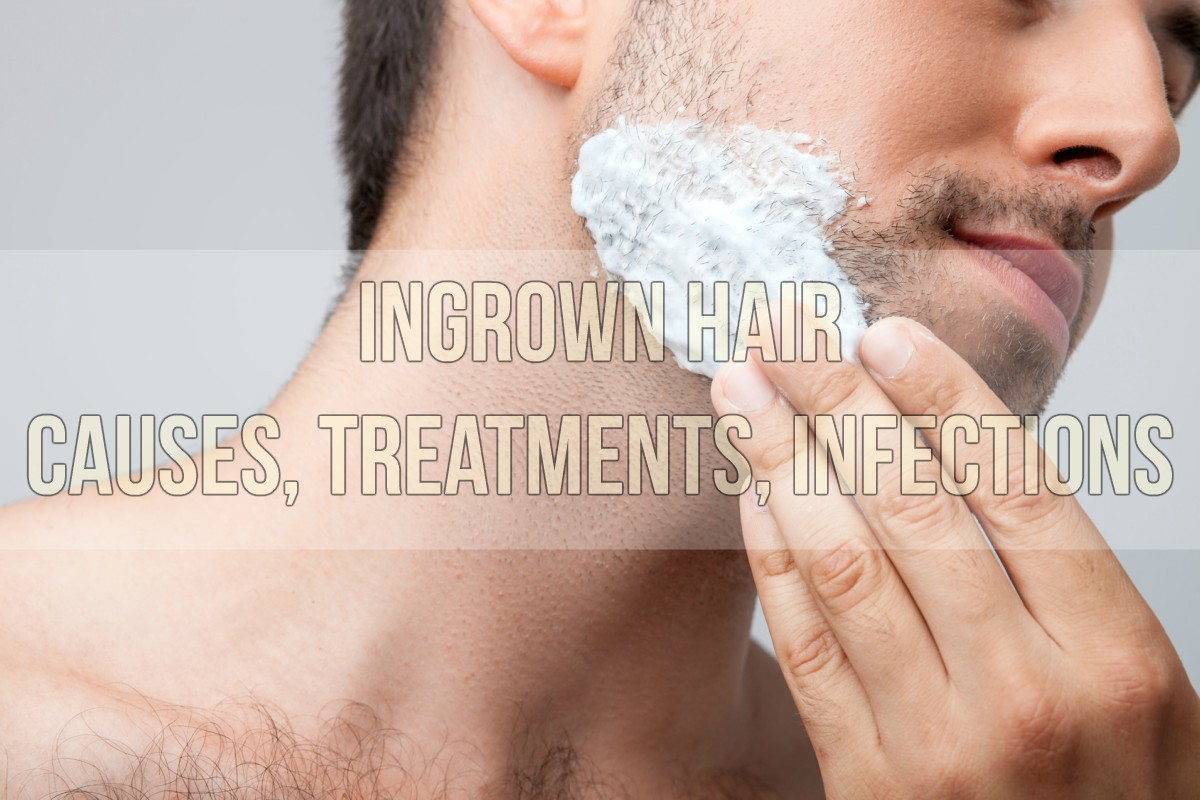Ingrown hair is usually due to hair that was cut short close to the skin and it created a sharp tip which could have easily pierced the skin. Ingrown hair is mainly attributed to improper or aggressive shaving techniques, other hair removal techniques like waxing and also friction due to tight clothing. In other cases however ingrown hair has been known to occur naturally where too much dead skin blocks hair follicle openings and causes hair to grow sideways.
Ingrown hairs are not limited to certain groups of people and can affect anyone. They are however more likely to appear in adults and teenagers and also in African-American individuals as their hair tends to be thicker and coarser.
Ingrown Hairs Diagnosis
One of the most common symptoms of ingrown hairs is tenderness and itchiness. There is also the red bumps which form on the skin around the area. These bumps usually appear just a few days after shaving and they get worse as hair grows back. Some individuals also experience painful papular eruption after shaving. This is where the upper skin layer has dilation of small superficial blood vessels. This causes the skin to appear red and flushed. Moreover, pustules may form in those areas with the ingrown hair as a result of common skin bacteria such as Staphylococcus.
Treatment of Ingrown Hairs
In most cases ingrown hairs go on to heal by themselves. However, these hairs may in some instances become a nuisance. At this stage, there are a number of treatments that can be applied. Some of these include:
• Laser Hair-removal : This is not only a treatment method but also preventive. Laser treatment helps to permanently reduce the number of hairs. This treatment however works only on dark hairs currently. It is still preferred because it is very fast, efficient, and safe.
• Chemical depilatories : Another treatment method is use of chemical depilatories. These work by loosening the hair structure thus blunt tips of shaved hair at the openings of the follicle. These chemical depilatories should however be used every other day instead of daily to minimize chemical irritation on the skin. They can also be used together with Hydrocortisone cream to alleviate the irritation caused.
• Topical antibiotics : For severe cases which have even formed pustules and abscesses, you can opt for Topical and oral antibiotics.
• Topical creams
• Medical removal : Medical removal of the ingrown hair by pulling out the hair or doing small incisions. The best results are however reached when using combination therapy. However, you should consult your doctor first.
• Electrolysis : This is also another treatment to consider. This is effective as it permanently remove hairs. This treatment usually targets individual hair follicles and the destruction of hair follicles is permanent. Electrolysis can however tend to be slow and it requires multiple treatments.



wow thank you so much for sharing this! I have been thinking about laser hair removal but I am still not sure if I want to do this. Do you have any opinion with laser hair removal? My hair is not too thick but it can be dark. Asian hair haha.
Linh
http://www.xcapewithlinh.com